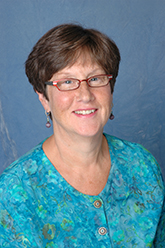
This blog is the fourth in a series following the Fall 2014 OYIF Convening. We interviewed Terry Grobe, a program director on Jobs for the Future Pathways Through Post-secondary team, who shared with us her experiences from the Convening, and most importantly, how she’s applying what she’s learned to her work.
By Terry Grobe, Program Director on Jobs for the Future Pathways Through Post-secondary team
Tell us about your work within the OYIF.
I am a Youth Pathways Director at Jobs for the Future. I’ve had the good fortune and pleasure of being involved in the Opportunity Youth Incentive Fund from the time of its inception. With the team here at Jobs for the Future, and the Aspen Institute staff, I’ve helped select communities for both development and implementation grants, provided asset mapping visits to communities, and assisted with the design and delivery of the fall and spring convenings.
What was one lesson, insight, or idea that resonated with you the most coming out of the OYIF Fall 2014 convening?
I was electrified by the commitment of Starbucks to support young people towards getting their college education—and making it available on-line and free whether these young people ultimately stayed with the company of not. Businesses investing in the health of communities in this way is so notable—we need to see a lot more of that kind of commitment in order to make career pathways real and viable. On a related note, I saw the growth in employer engagement generally across the OYIF communities— it’s clear to me that employers are stepping up and engaging with the collaboratives to open up more opportunities for young people.
What are some of the ways you will apply the learnings from the convening in your work on the ground?
Many of the communities developed great visuals that show how their pathways are designed and delivered and how partners play various roles in providing services and supports. I love these visuals and they help me understand the work —a picture really is worth a thousand words. I’ve now begun encouraging communities to develop graphic representations and share them with other communities and local stakeholders as a way to make the work less esoteric and more concrete. I think these ‘pictures’ of what the communities want for their youth capture the vision of the pathways development work very powerfully.
As the implementation partner in the OYIF, what do you see as key growth areas in the OYIF learning community in 2015?
Policy development is an area where we need a lot more specificity (and targeting) of state and federal policies that are directly related to what communities are trying to accomplish. At the fall convening several communities shared policy efforts and accomplishments. We learned from Maine that advocates were able to extend services to transition aged youth (formerly in foster care) to age 26. That’s a stunning win. And we heard from Boston partners who have been instrumental in changing local policy around dropout recovery and reengagement and are promoting state dropout prevention legislation. We need to continue showcasing examples of the attempts to change and develop policy—especially for key segments of the OY population such as young people with criminal justice involvement.
Systems change work is closely related to policy development. It was clear from the session with OMG (now Equal Measure) that backbone leaders saw the OYIF initiative not as a program-based but a systems change initiative—these leaders pushed the evaluators (and all the national partners) hard on making sure systems redesign was front and center in the evaluation framework. We are all challenged by this charge and again need to provide specific examples of systems change so we are clear on what this entails and what it takes to accomplish it.
Finally, we really need to keep career development and work experience as key components of longer-term postsecondary and credentialing pathways. Youth need time for skill development but have immediate employment needs. Meaningful work may be one of the strongest motivators for youth to get and stay on a pathway. As an implementation partner I want to learn about and showcase more pathways that quickly connect youth to good work. I want to raise up employers that are making a special commitment to train, hire and support young people as they move along the pathway and who see this participation as contributing to their bottom line.
What is your vision for the future of the work around connecting opportunity youth onto pathways to post-secondary education and careers?
I want to see the formation of a more rational pathways system supported by good policy and effective and coordinated practice. I’d like to see more pathways to good careers for young people in this age group—it is a tough economy and my heart aches for youth as they set out to find their places in the world. They deserve a place and the health of our society depends on it. I hope we are collectively measured by how well we are helping them stay optimistic, and connected to a good and rewarding career and be able create good lives for themselves. If more young people can really understand and embrace their assets-and adults see and nurture these, thousands of our young people will make amazing contributions to their communities and ultimately to our nation. (I had a great conversation with a young man from Tucson who is running his own non-profit who is just one of the many young people at Aspen who are already proving this point)
Oh, I can’t wait to see the progress made when we meet this spring in New Orleans!
